
Evidence of an Aztec Connection
Serpent Raises it's Head in Georgiaby Mark Hooten - December 2017 ©
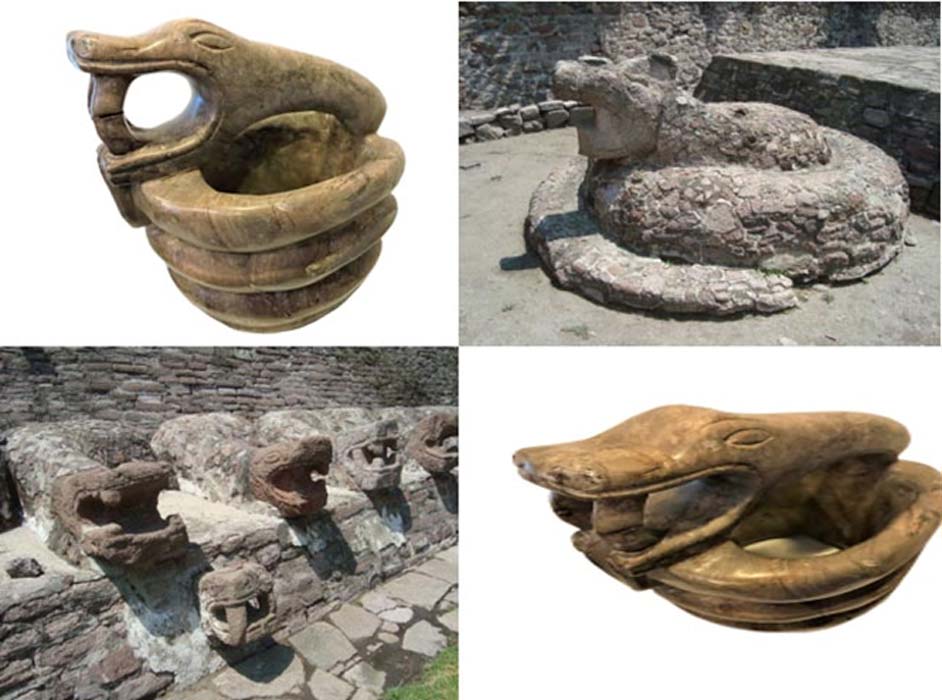
A Serpent Raises its Head in Georgia:Is this Evidence of an Aztec Connection?
A recently discovered artifact in Northern Georgia is a testament to the importance of religious art in the spiritual lives of the area’s ancient Indigenous residents. What can such an oddly placed find tell us about the culture from which it came? Might its uncanny resemblance to serpent effigies found in Aztec culture indicate about the reach of ancient cultures in North America?
Serpent’s Creation
Sculpted in Georgia Conglomerate, the exquisite 7.8 pound (3.53 kg) piece shows that the sculptor exercised great care in its execution. When asked how long such a piece would take to complete, distinguished Chicago wildlife sculptor Walter Arnold shares that “if he stuck with it”, it could have been completed in 1 ½ weeks, but added it would depend upon the hardness of the conglomerate. Two curious features that leave one to ponder their purpose or significance, are the are exacting bilateral symmetrical cuts on the fangs and the protruding funnel shaped non-snake like tongue
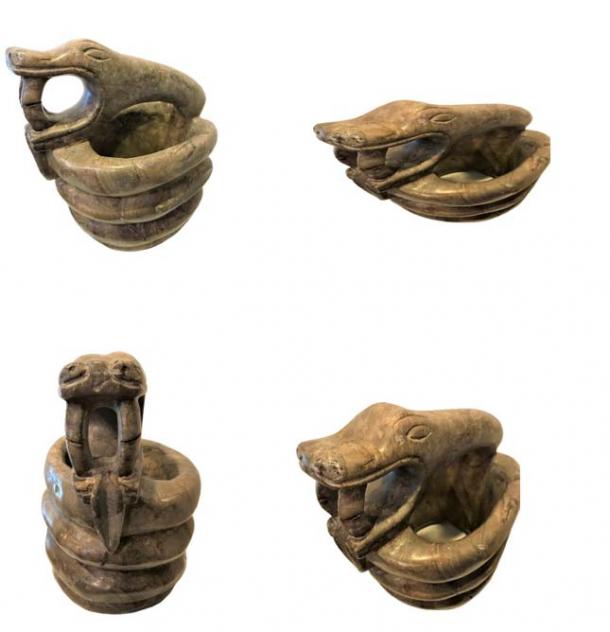
The serpent model that was found recently in Northern Georgia, USA
The Find Location
The sculpture as found submerged in a remote small stream covered in many years of mud and debris by member Tommy Rainey of the Indigenous Peoples Research Foundation, a Georgia Non-Profit organization dedicated to research and preservation of North American pre-Columbian sites. There is no contextual information that can provide when it may have been made or by whom. It is however emblematic of serpent veneration practiced by Indigenous groups throughout much of North America that extends back to at least the Hopewell Period (200 BC-500AD). The strong resemblance to the 138 statues found at the Aztec site of Tenayuca (Mexico State) and several others in Mexico (Coatepantli of Nahuatl), can lead one to believe that at various times in the history of what is now known as the Southeastern United States, there existed civilizations (and or their descendants) that were once believed to have only existed in other parts of what is now known as North America.
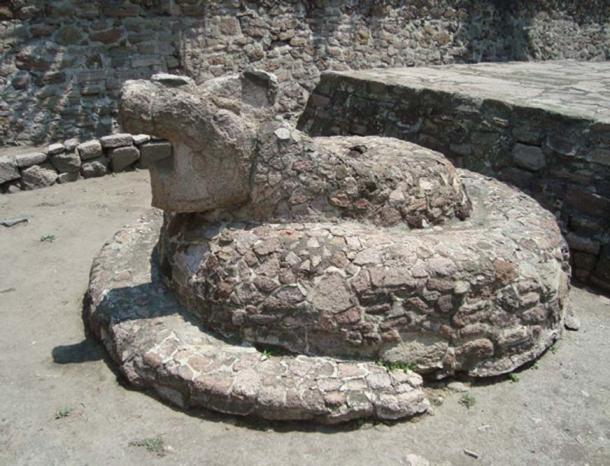
Stone serpent (Kukulkan) at Tenayuca, Mexico State (Image: Jose Miguel Almeyda)
The serpent's metaphysical importance is indicated not only by the quantity of artifacts found in North America, but its depiction on well-crafted exotic copper, mica and shell hand held artifacts. Others were carved or painted on rocks, cliff faces, and most dramatically. as large serpentine shaped stone and earthen effigies scattered thru out eastern North America. Equally diverse, are its naturalistic, stylized, abstract and anthropomorphic forms which varied over time and by cultural group.
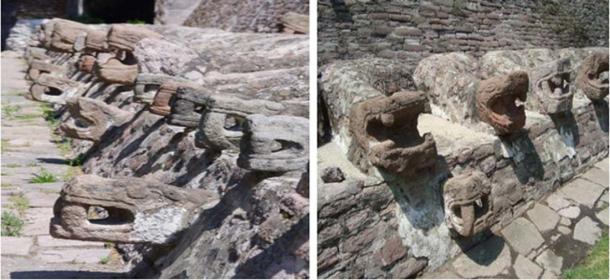
More stone statues representing Kukulkan at Tenayuca (Image: Jose Miguel Almeyda)
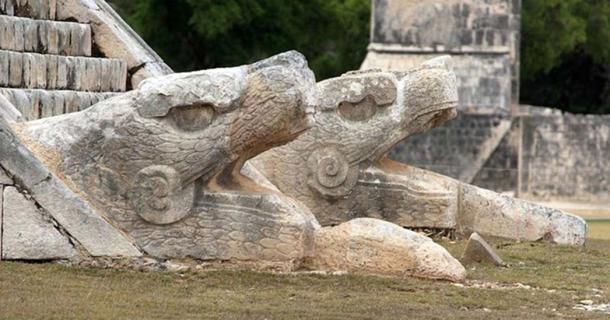
Kukulkan representations found at Kukulkan Temple, Chichén Itzá. (Image: Jose Miguel Almeyda)
Unlike in North America (where the serpent and the other principal deity, a bird, are separately portrayed) in Mesoamerica the duo was conflated into a feathered serpent character whose name varied overtime and by cultural group. As in North America, the serpent’s origin extends far into Mesoamerican history appearing in Olmec iconography (ca.1400-400BC).
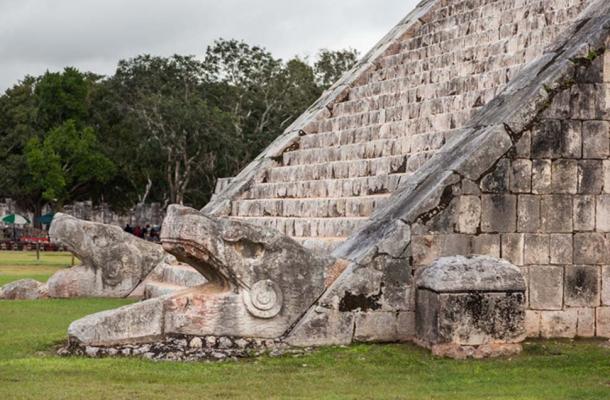
Kukulkan representations found at Kukulkan Temple, Chichén Itzá. (Image: Jose Miguel Almeyda)
In comparing the artifact with Kukulkán and Quetzalcohuăl, one can see stylistic similarities of the tongue and head shape. Aside from archaeological and other evidence indicating mobility between the two regions, it is reasonable to speculate there could be commonalities of theology. A current analogy is the comparison of the Western and Eastern Christian church. Though their cross shaped icons differ slightly, the two sects are separated only by theological nuances.
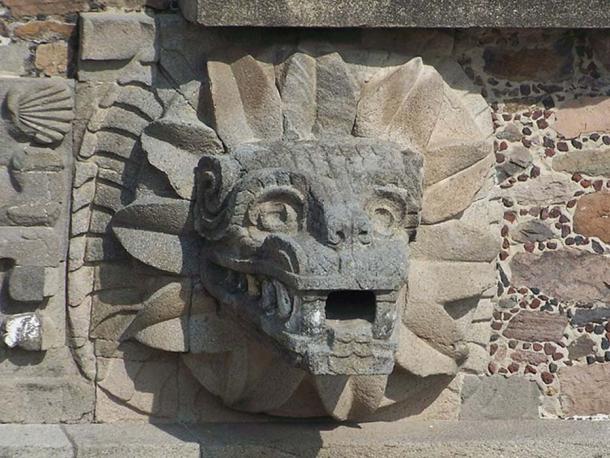
One of the feathered serpent heads that decorates the Temple of the Feathered Serpent ( Quetzalcohuăl) in Teotihuacan. (Image: CC BY-SA 2.0
)
This artifact is one of several major discoveries made in Georgia within the past two years that has begun to reshape modern thinking about the people who once called this land home. For more information and to view other discoveries please visit WWW.PRECONTACT.ORG.
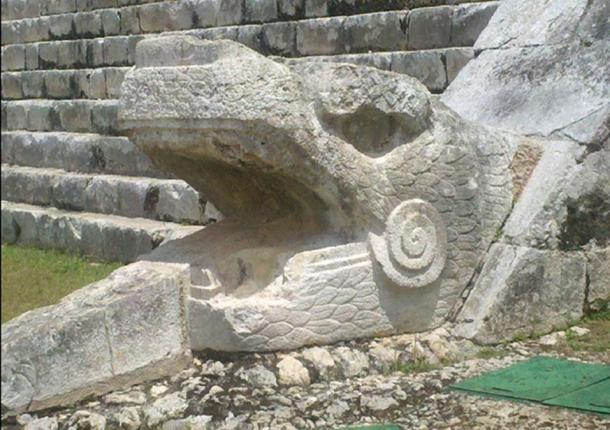
Top image: Top left to Bottom Left: Serpent artifact, (Author), Single serpent, Kukulkan, (Jose Miguel, Almeyda), Serpent model, (Author), Serpent heads Kukulkan, (Jose Miguel Almeyda)
Resources
1 Powers, Susan C., Early Art of the Southeastern Indians: Feathered Serpents and Winged Beings, University Press, 2004
Additional Resources
Cotterell, Arthur and Storm, Rachel, The Illustrated Encyclopedia of World Mythology, Sterling Publishing, (2014)
Enciso, Jorge, Designs from Pre-Columbian Mexico, Dover Publications, (1971)
Goodman, Fredrick, Magic Symbols, Brian Trodd Publishing House Limited, (1989)
Seidenberg, Abraham, The Ritual Origin of Geometry, Archive for History of Exact Science, Vol. 1, No. 5, pp. 488-527, (1962)
Wirth, Diane E., Parallels: Mesoamerican and Ancient Middle Eastern Traditions, Stonecliff Publishing, (2003)
Mission Statement
The Foundation was established to protect and research intriguing artifacts recovered from several locations in the Southeastern region of North America, with the goals of more fully understanding the pre-Columbian history of North American indigenous cultures and finding a public venue for their permanent display.
Many of the artifacts illustrate there is still much to be learned about the pre-Columbian history of the region.
It is hoped that our efforts will incrementally be helpful in providing a clearer picture of this fascinating period.
We invite you to review these artifacts in our developing website, and contact us with comments or questions.
© 2024
All Rights Reserved | Indigenous Peoples Research Foundation
ADLC Web Design
| Gwinnett, GA